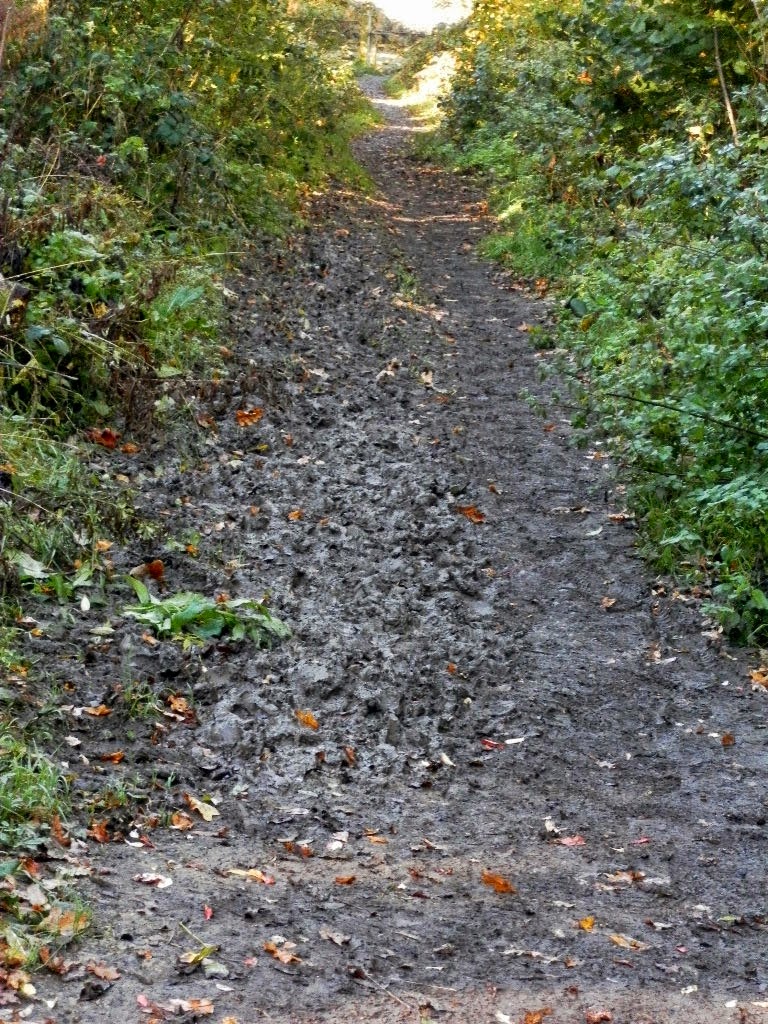There
couldn’t be any danger of us being beaten by the weather again, could
there?
After ex-Hurricane Gonzalo had
sped on its way to go and make a nuisance of itself on the continent, we have had
warm air gently flowing in from the south.
Following last
week’s disappointment, we were once again scheduled to be working under
trees. This time in Little Wittenham
Wood. Task: To trim back vegetation from
next to the bridleway, in preparation for final resurfacing works scheduled for
November to make it a much drier and more easily accessible section of path. And – site warden added optimistically – “if
we finish that, move on to coppicing a section of woodland next to the Woodland
Ponds.”
There was no
doubting that today’s weather was perfect for Green Gym:
The blight
on the pumpkin today: mainly the fact that there were so few of us there: only half a dozen. – Result of
combination of half-term (some people away on holiday, or only just back; some
hosting visitors coming to them; others on grandparental duty) + the winter cold
currently doing the rounds.
There was
also the matter of a slight delay to the start. Caused by a mix-up between two groups, each of which had been directed to the main car-park, which did not have sufficient capacity for both. To be fair to the other group, there was a sign up saying the space was 'private' and 'reserved for a function'. On every other occasion there, such signs have turned out to be defunct: relics of events which had happened the previous weekend. Not this time! An exasperated event-organizer, who had probably
by then dealt with any amount of bank-holiday-week drivers willfully ignoring the notice, promptly cast
doubts on … ah, I forget whether it was my eyesight, my literacy, or my
intellect that was being called into question.
No matter: it took a little while to establish that we were not “walkers”
visiting the site, but workers; and that we should have been directed to the
alternative, Clumps car-park.
When we finally arrived at the work-site, there was no doubting which sections of pathway we were to be
dealing with.
 |
| Some of the footpath had already been resurfaced ... |
 |
| and some had not |
The
particular reason for manicuring the verges was temporarily to denude a
habitat so that Great Crested Newts (Triturus cristatus: protected species) do not choose to
hibernate there, only to be disturbed when the contractors arrive to upgrade
the pathway.
There could be little doubt
that the right of way needs improving for use by humans.
This, after all, is how it is after a dry
summer:
It was, nevertheless, a
curious objective for a conservation work-party: temporarily to make a habitat less
wildlife-friendly. On the way to
achieving it, there was much discussion of other bizarre phenomena. Probably the most remarkable (and seasonal,
if we’re thinking Hallowe’en) was the lifecycle of Sea Squirts, even if it is not quite as dramatic as popularly
portrayed. They aren’t really autocannibal
zombies!
We also lost
one tool and gained another. In the
sense that: there is a set of shears which now needs repair; and a hammer was
found, which is not part of the site complement of tools, but which – with some
love & attention from our Tools Officer – can be brought up to a good
enough condition to be added to our inventory:
Having
started late, we also had to finish relatively early. For it was some distance back to the alternative car-park. A couple
of us took the scenic route:
 |
| View from Little Wittenham Wood: Little Wittenham and St Peter’s Church |
 |
| View from Wittenham Clumps: Didcot Power Station, after demolition of 3 cooling towers at decommissioned Didcot A, and fire at Didcot B, which is now operating at decreased capacity |




%2B21%2BOct%2B001.JPG)